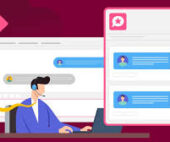Fireflies.ai Launches Domain-Specific Mini Apps to Automate Meeting Insights
Khosla Ventures-backed Fireflies.ai, an AI-powered note-taking platform, unveiled a suite of domain-specific “mini apps” on Wednesday, designed to automatically extract actionable insights from meeting transcripts. With the rise of automatic speech recognition (ASR) and generative AI, meeting intelligence startups—such as Otter, Read AI, Circleback, Krisp, and Granola—have seen rapid growth. Fireflies.ai is no exception, with co-founder and CEO Krish Ramineni reporting an 8x increase in users and achieving profitability. To accelerate its expansion, the startup is rolling out over 200 mini apps tailored to various roles and use cases, including: While competitors like Circleback require manual prompting to generate insights from transcripts, Fireflies.ai’s mini apps eliminate the need for user input, streamlining the process. “The time it takes to derive insights post-meeting is significant,” Ramineni told TechCrunch. “These apps close that gap by automating actions immediately after meetings, boosting productivity.” Users can also integrate outputs with platforms like Salesforce, HubSpot, Asana, Jira, Slack, and Microsoft Teams. For instance, a meeting summary can be automatically shared with a manager via Slack once the discussion concludes. Fireflies.ai allows users to deploy mini apps per meeting and even build custom apps for specialized needs. The company plans to introduce team-sharing capabilities in the future. Beyond mini apps, Fireflies.ai is enhancing meeting intelligence with pre-meeting briefs on participants and organizations. The startup is also testing “digital twins”—AI avatars that can attend meetings and respond to basic queries, similar to experiments by Zoom and others. This expansion underscores Fireflies.ai’s push to automate workflows and maximize efficiency in professional collaboration. Like Related Posts Salesforce OEM AppExchange Expanding its reach beyond CRM, Salesforce.com has launched a new service called AppExchange OEM Edition, aimed at non-CRM service providers. Read more The Salesforce Story In Marc Benioff’s own words How did salesforce.com grow from a start up in a rented apartment into the world’s Read more Salesforce Jigsaw Salesforce.com, a prominent figure in cloud computing, has finalized a deal to acquire Jigsaw, a wiki-style business contact database, for Read more Service Cloud with AI-Driven Intelligence Salesforce Enhances Service Cloud with AI-Driven Intelligence Engine Data science and analytics are rapidly becoming standard features in enterprise applications, Read more






